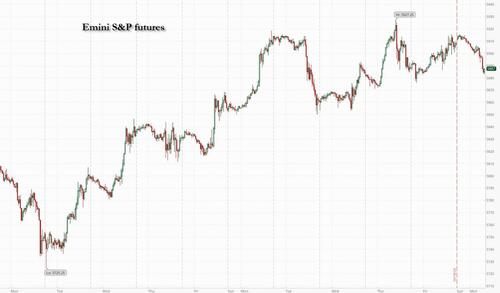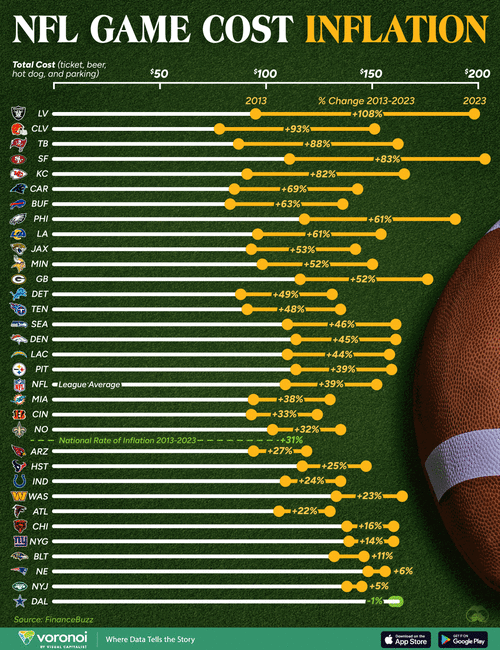Bitcoin Is A Lot More Than Digital Gold: A Rebuttal To The ECB’s Crypto-Critical Research Paper
Bitcoin Has Plenty Of Utility
My co-author Ulrich Bindseil and his ECB colleague Jürgen Schaaf have written an intriguing paper on the distributional consequences of Bitcoin should it continue to appreciate in value. I disagree with their argument and want to hash out why.
In that paper, they make a creative argument that if Bitcoin was nothing more than a speculative asset with no other economic or social utility, then continued price appreciation will have negative consequences for the rest of society. I have no issue with their conclusion — it’s a thought out and robust argument. But their premise on the utility of Bitcoin is flawed, for two reasons.
First, they have an unnecessary focus on whether Bitcoin has lived up to the goals of its creator and early adopters. I think this observation is unimportant, even if true. The focus should be on whether Bitcoin has utility for society today. Second, they fall into the common trap of treating Bitcoin as just an asset, one that is independent of the novel infrastructure that powers it.
Put together, these mistakes lead Bindseil and Schaaf to miss Bitcoin’s appeal as a form of monetary insurance. Given the importance of savings and payments in society, this is the ultimate utility, financially and socially, and the simplest justification for Bitcoin having value.
Satoshi is Irrelevant
The best litmus test for any technology is whether it serves a useful purpose for society today or has the potential to do so in the future. The intentions of its creator are unimportant. A technology that finds utility beyond what its inventor envisioned is no less useful, or valuable.
The paper claims:
“The pseudonymous Satoshi Nakamoto published the whitepaper on Bitcoin in 2008, with the vision of a global digital currency by creating a structure for making payments without a trusted third party acting as intermediary. But Bitcoin’s conceptual design and technology appear to have prevented this vision to materialise”
Bindseil and Schaaf are correct in their observation that Bitcoin today is not used as “Peer to Peer” cash in the way some had hoped fifteen years ago. The cryptocurrency is seldom used for online purchases or simple peer to peer payments. But we shouldn’t read too much into the title and introduction of a (surprisingly) short white paper from an unknown author who disappeared over a decade ago or his adherents.
Whoever Satoshi Nakamoto was, they were a keen observer of the challenges of modern payment systems. Token money (in the form of coins and banknotes) has always offered desirable features like universal access, privacy, peer-to-peer payments, no fees, and instant settlement. But token money doesn’t work for large or long distance payments — and it certainly isn’t useful online — so society has migrated to ledger money, as intermediated by trusted third-parties like banks and FinTechs. Those intermediaries have their own flaws. They must charge fees to cover their costs, tend toward becoming a monopoly, and often discriminate against certain users, either for their own interest or because they are compelled to.
On this point, Bindseil and Schaaf focus too much on Nakamoto’s use of “mediating disputes” as a source of censorship in payment systems.
“The problem that Nakamoto (2008) believes to have identified seems however to start from a misunderstanding. In principle, financial institutions can avoid mediating disputes. Mediation is rather an optional service than a necessity. It is demanded by customers and charged by payment services providers. For example, PayPal does not offer any dispute mediation if payments are made in the “friend and family” mode; and these are free of charge. Likewise, credit transfers between bank accounts are not mediated, i.e. if an e-commerce delivery is paid in advance via credit transfer and the customer is unsatisfied with the good received, the bank will not mediate”
They are correct in pointing out that many payment systems don’t provide active mediation, but that argument misses the broader point that all trusted intermediaries are liable for every payment that they process. What if an aggrieved party to a fraudulent payment demands compensation? Or a government holds them responsible for illicit flows?
Traditional payment systems deal with these risks in three (non-exclusive) ways.
-
Some, like credit cards, actually mediate disputes, then pass the cost on to their users. They do this presumably because users want them to, and merchants (who pay for the implicit insurance) tolerate the cost.
-
Others, like bank-to-bank payments, actively censor customers and their activity via costly “know your customer” and “source of funds” compliance regimes. They do this due to a combination of laws (such as the Bank Secrecy Act in the US) and risk mitigation methods. At best, these regimes impose additional cost and friction on everyone. At worst they lead to discrimination against certain kinds of customers, customers who’ve done nothing wrong and should have access.
-
Yet others, such as central-banks who run RTGS systems, drastically restrict access to an exclusive set of wholesale payment providers, then demand those clients restrict their customers as well. In each instance a trusted intermediary has to protect itself, leading to risk aversion across the board and growing censorship.
Evidence of Nakamoto’s insight on the direction of travel for payment intermediaries is all around us. The phenomenon of “de-risking”, where financial institutions cut ties with other institutions, specific categories of clients, or even entire economies, to reduce risk and avoid compliance issues, is so prevalent that the US Treasury Department now has a program to combat it. Cross-border payments remain stubbornly expensive, particularly for remittances, with compliance often cited as a major reason why. There are frequent media mentions of debanking, and legal businesses in “undesirable” industries such as sex work or cannabis have a hard time getting basic banking, even in developed nations. Ironically, the crypto industry itself has become the victim of a notorious censorship campaign from banking and payments in recent years.
Bitcoin is the first ever non-intermediated form of ledger money. It offers some of the desirable features of token money, such as universal access, but doesn’t suffer from the censorship that’s part and parcel for intermediated payments. The downside of this design is that Bitcoin can also be used for illicit activity — something that skeptics love to point out. In their paper Bindseil and Schaaf reference the popular critique that only criminals use Bitcoin as a medium of exchange.
I have two issues with this argument. The first is that traditional payment systems are also used for illicit activity, despite the onerous compliance regimes imposed on them. Indeed, from a cost benefit analysis, I consider the current approach to preventing illicit use in banking a failed regime.
More importantly, illicit use is a political construct, not an economic one. For example, many countries impose capital controls, preventing their citizens from diversifying exposure to what is likely a weakening currency. Violating those controls is therefore illicit. But in practice, wealthy and connected citizens almost always have access to foreign bank accounts and means of getting their money out, leaving the underprivileged to suffer. Similar moral dilemmas exist for economic sanctions.
Is it wrong for a Venezuelan citizen to use black market funds to purchase medicine, or for an Iranian expat to violate economic sanctions to support family back home? The law says yes, basic decency says absolutely not. We don’t know if Nakamoto ever saw these types of applications — which I’d classify as illicit yet moral — for Bitcoin. But that doesn’t impact its utility in both cases, and there is anecdotal evidence that per-capita adoption is highest in the kinds of places where these problems persist.
Bitcoin Is a Lot More Than Digital Gold
The rest of the paper focuses on Bitcoin as a digital version of gold. In the authors’ defense, this narrative is now also popular with many crypto advocates, particularly now that newly approved ETFs in the US make owning it (however indirectly) easier. But Bitcoin is fundamentally different from gold because gold doesn’t come with its own payment system. Bitcoin’s payment system preserves both its scarcity and its transferability.
The “digital gold” narrative derives from the basic fact that both Bitcoin and gold are scarce and — at least for now — used more for savings than payment. Neither is a unit of account. (Some Bitcoin proponents even argue that Bitcoin is better than gold as a store of value because its supply is knowable and finite). Despite these similarities, the two assets are more different than alike, for three reasons.
-
First, the authenticity of bitcoins is cheaper and easier to verify. Anyone can keep their own copy of the bitcoin ledger on their computer and continuously verify both the “purity” of coins being sent to them and the current global stock, down to the smallest fraction of a unit. Gold requires expensive equipment to authenticate and the global stock can only be estimated.
-
Second, bitcoins can be stored by anyone, anywhere, for minimal cost. Ownership is represented by a cryptographic key that is nothing more than an alphanumeric string. In practice, the bearer nature of bitcoins forces owners to deploy more sophisticated methods of custody, but the starting point is simple, and even the most sophisticated ways to hold bitcoin are more economical than the cheapest ways to store gold. The cost of storing gold can scale linearly with the amount (bigger warehouses, etc) but the cost of storing bitcoin does not.
-
Third, bitcoins can be transferred quickly and easily, often at minimal cost for medium to high value payments. At the time of writing, the average cost of a Bitcoin payment is $6. Notable, this fee is independent of the amount being sent, and would be charged for a $1B transfer alongside a $100 one. Gold is one of the hardest and most expensive assets to transfer. And unlike bitcoins, the cost of transferring gold climbs with the amount being sent and the distance. Bitcoin, by virtue of being virtual, doesn’t have this problem. The cost of paying it across the world is the same as across the room.
Some skeptics argue that Bitcoin’s transaction costs are still too high when compared to other kinds of electronic payments using fiat money. The authors share this belief as stated in the paper’s introduction:
Even 16 years after its inception, real Bitcoin payments, i.e. effectively “on chain”, are still cumbersome, slow and expensive
This critique requires more context. Slow and expensive compared to what? The types of fiat payments that are supposedly cheaper than Bitcoin — cards, instant payments, e-money transfers, etc — are highly limited in scope. They are almost always domestic (thus not cross-border), usually have transfer limits, may rely on deferred net settlement (ACH payments can take days to settle, cards even longer), and have hidden costs such as interchange fees (to merchants) and lost remuneration (for everyone).
A fairer comparison to Bitcoin are other types of large-value, cross-border, and gross-settled payments, such as the kind of bank-based wire transfers used for business-to-business and capital market activity. Except for rare periods of high-congestion, Bitcoin payments are often cheaper and faster. Bitcoin payments don’t scale with the amount being sent, operate 24/7, and usually settle within an hour, saving users fees, time, and lost interest. It’s unlikely that bank-based payments will offer these features — the costs and delays are fundamental to bank profitability. Bitcoin transfers are also fully transparent from start to finish, a feature banks can’t physically offer.
Most of all, Bitcoin payments are available to anyone with a device and access to the internet, a far larger set of economic agents than those with bank accounts. The most expensive payment is the one you can never make.
To be fair, Bitcoin’s efficiency in payments can best be realized for economic activity that is also denominated in bitcoins. The authors are correct in pointing out that this is not the case, except for the small niche of Bitcoin foreign-exchange transactions. Actual business-to-business payments or capital market activity is likely to take place in other currencies. Thus, counterparties hoping to settle those types of payments via Bitcoin would have to deal with the cost and delays of purchasing bitcoins to make the payment then selling them to return to fiat. Doing so would add significant costs and complexity. For corridors where bank-based wires are readily available, it’s unlikely Bitcoin would be a superior option from start to finish.
All of that said, greater acceptance and adoption of Bitcoin, even if only as a store of value, can spur greater economic activity denominated in it.
Bitcoin is Monetary Insurance
Put together, the previously mentioned features give Bitcoin utility that Bindseil and Schaaf miss. Just because something isn’t used on a day-to-day basis doesn’t mean that it is not useful. Bitcoin is a type of monetary insurance. It offers protection from dilution, confiscation, and censorship.
Unlike any fiat currency, there is no risk of excess printing or borrowing by the sovereign in charge. This sort of hard money isn’t always desirable for everyday activity, and there are valid reasons why most economics moved away from the gold standard long ago. But hard money is highly desirable as a hedge.
Also unlike fiat currency, which exists mostly inside the ledgers of regulated financial institutions with close ties to the government, Bitcoin exists on a decentralized ledger that is highly secure and very difficult to co opt. This makes bitcoins difficult to confiscate. Even gold is harder to hide or transport during a crisis. This feature is also argued to incentivise illicit use, but that, once again, is an oversimplification. In the event of a violent revolution or invasion by foreign aggressor, something like Bitcoin could be invaluable for the innocent parties affected.
This is not a purely hypothetical risk. When Russia initially invaded Ukraine, it communicated a desire to topple the government and control the entire country. It’s not clear what would have happened to people’s bank accounts if it had succeeded.
Lastly, Bitcoin is free of censorship. Anyone can generate their own cryptographic key and send payments to anyone else. This feature is increasingly desirable given the growing weaponization of access to bank and payment systems as a geopolitical tool. America’s freezing of Russian and Afghani dollar foreign exchange reserves, along with aggressive sanctions on countries such as North Korea, Iran and Venezuela, create an incentive for nations to seek an alternative.
Not just those nations, but all nations. We are entering a period of growing geopolitical tension, trade wars, and polarization. Given the importance of foreign-exchange reserves — and the ability to actually use them — most countries, along with their largest corporations and even citizens, will look to diversify. The problem is that there is no clear alternative inside the fiat system. But there is Bitcoin.
Notably, Bitcoin does not need to be used on a regular basis for the insurance analogy to hold. People who buy fire insurance don’t expect their property to imminently burn down — if they did they’d invest the money in fire extinguishers. Insurance is the kind of product that is always needed but seldom used. The protection it offers smoothes out the risk curve for economic agents, allowing them to pursue other types of economic activity they otherwise would not.
With sovereign debt levels at historical highs around the world, incidents of hyperinflation are increasingly likely. Over a third of the global population lives under some kind of capital control, and de-dollarization is slowly fragmenting global liquidity. The cost of insurance climbs as the likelihood of negative events does — one explanation for Bitcoin’s price appreciation in recent years.
A common pushback to this argument is the fact that many Bitcoin investors hold it via an intermediary — such as a FinTech app, cryptocurrency exchange, or ETF issuer — and cannot benefit from the properties of direct ownership discussed above. While valid, this criticism misses a basic economic principle. Those who hold Bitcoin indirectly are simply betting others will want to hold it directly, now or in the future. This is a rational economic bet that is commonplace in many markets. Lots of people speculate in oil futures without the intent (or even means) to deliver, or take delivery of, a barrel of oil.
In Conclusion
Bitcoin is a unique type of money that doesn’t analogize well with fiat currency or gold. The cryptocurrency’s unique properties make it appealing as a form of insurance. The fact that holders aren’t actively transacting it doesn’t mean they are not finding utility beyond price appreciation. If current financial, regulatory, and geopolitical trends continue, then many more nations, corporations, and individuals will want to hold some to protect their monetary downside, from inflation, confiscation, and censorship. This outcome will likely drive the price higher. Given all of its utility, that appreciation will benefit society.
Tyler Durden
Mon, 10/21/2024 – 09:45
via ZeroHedge News https://ift.tt/HPWVMDC Tyler Durden










